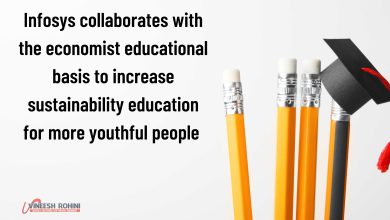In 75 years, India’s education rules have did not get rid of inequality
As the country Waves flags and celebrates the 75th anniversary of India’s independence, it’s also time to take stock. What did India’s founders and residents dream of, how has India fared, what have been our demanding situations and successes?
The twine’s newshounds and members deliver tales of the length, of the traumas but also the hopes of Indians, as visible in non-public debts, in subculture, inside the economy and inside the sciences. How did the contemporary nation of India come approximately, what does the flag constitute? How did literature and cinema address the trauma of partition?
On the time of independence, Indian leaders were privy to the dismal kingdom of training inside the country. Crude literacy in undivided India changed into simplest 16% due to the low penetration of simple education, which will be attributed no longer only to the British government’s apathy in the direction of the development of the Indian hundreds but additionally to the tradition of denial of training to the underprivileged sections of society, consisting of girls.
Therefore, at the same time as enacting the constitution, pro-training and anti-caste agencies demanded that education be made a fundamental right. But, others had been no longer interested by changing the fame quo, mentioning the non-availability of assets to fulfil a constitutional dedication. On this competing political surroundings, the constituent meeting in 1949 followed article 45 as a non-judicial provision of India’s charter which directed the state to offer, within 10 years, unfastened and obligatory education to all kids until they achieve the age of 14 years.
Literacy rose simply to 24% in 10 years. To rectify the situation, the government appointed Kothari Commission (1964). Amongst other matters, the commission advocated the introduction of a common public education machine and a sluggish growth in authorities investment in education from the then 2.9% of GDP to 6% by way of 1985-86. As we know, these hints of the Kothari commission stand unimplemented even after 55 years!
J.P. Naik (1982), a renowned educationist and member-secretary of this commission, turned into deeply vital of the progress made by using the authorities of India at the fee’s tips, announcing “no political celebration within the united states of America is committed to the radical reconstruction of training”.
On this surroundings of reluctance, the charter become amended in 1976 to make training a “concurrent” subject, whereby both the union and state governments may want to formulate rules on schooling, allocate sources and enforce implementation. It became in advance the one of a kind right of the country governments. In 1986, the union government issued a new national education policy (nep) to fix training issues that protected a phase on “making the device paintings”. This policy, at the side of its revision in 1992 and this system of movement, became the guiding policy of the government of India and the states for next initiatives.
Released in 1988, operation blackboard changed into one such initiative geared toward presenting minimum essentials in the colleges, consisting of teachers, infrastructure, and teaching and studying cloth. Reviews of this initiative suggest that its achievements were nicely beneath target (PROBE, 1999; Dyer, 2000). In 1994, the government of India started out the world bank-funded district number one education programme (DPEP) in some selected districts to enhance enrollment, reduce dropouts, and enhance learning effects the use of a decentralized planning version.
While some scholars noticed desire within the district-degree, decentralized version to enhance the prospects of implementation, Krishna Kumar, former head of the NCERT, changed into deeply essential of it. According to him, the DPEP changed into just a smokescreen to hide the pitfalls of structural adjustment that India embarked on in 1991 and didn’t recognize even the reduced (as compared to worldwide benchmarks) expectancies of minimum levels of mastering. Kumar found that DPEP damaged Indian education through lowering the fine and stature of instructors via the temporary hiring of para-instructors and through encouraging substandard alternative schools.
On this historic context of reluctance, sub-top-quality coverage layout, and negative implementation, the Sarva Shiksha Abhiyan (SSA) became delivered in 2000 with the aid of the nation. Below pressure from the rising aspirations of the victims of caste within the put up-Mandal era and the global movement for education for all that started in 1990 at Jomtien, for the first time, the belief of universality became brought into education policy.
The Right To Education(RTE) act, which got here seven years after the 86th constitutional amendment and nearly 50 years after the promised date in the constituent assembly, did now not endorse radical structural reforms had to offer equitable quality schooling to all by means of making vital modifications inside the institutional and policy ecosystems and persevered the SSA coverage of universalizing low-first-rate education.
After 75 years of taking the reins of strength from oppressive British rule, why are we nonetheless suffering to offer general, equitable, and great essential training to our children? One clarification will be that typical education changed into now not a part of the natural sentiment of Indian leadership. In line with Weiner, who studied child labour and education policy in India, India’s governing elites lacked conviction approximately the efficacy of customary education.



